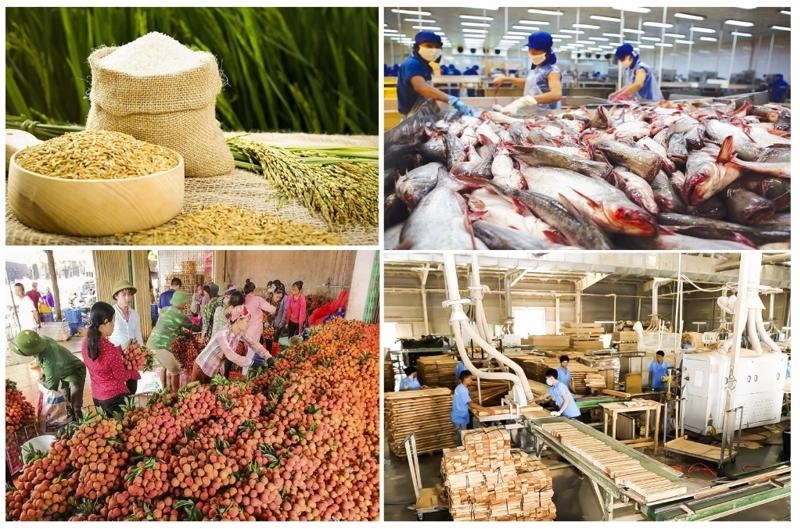Top three importers of Vietnamese agro-forestry-fishery products
VOV.VN - The United States, China, and Japan continued to make up the three largest importers of Vietnamese agro-forestry-fishery products in the first seven months of the year, according to the Ministry of Agriculture and Rural Development (MARD).
Statistics show shipments to the US accounted for 21.1% of the total and grew by 21.6% year on year, whilst those to China made up 20.5% of the total and secured 11.3% growth. Shipments to Japan represented 6.6% of the total with growth of 4% year on year.
Between January and July, Vietnam racked up a trade surplus of US$9.42 billion from agro-forestry-aquatic exports, marking an annual increase of 60%.
The country earned US$34.27 billion from agro-forestry-aquatic exports throughout the reviewed period, up 18.8% year on year.
The initial seven months of the year saw businesses ship abroad US$18.21 billion worth of agricultural products, up 23.4%; US$9.41 billion of forestry products, up 21.1%; and US$5.29 billion of aquatic products, up 7.3%.
Almost all key export items enjoyed high growth, including timber and wood products (US$8.7 billion, 21.9%); coffee (US$3.5 billion, 30.9%); rice (US$3.2 billion, 25.1%); cashew nuts (US$2.3 billion, 22.1%); fruits and vegetables (US$3.8 billion, 24.3%); and shrimp (US$1.02 billion, 7.1%).
Most notably, several items witnessed a significant increase in the average export price, including rice (US$632 per tonne, up 18.2%); coffee (US$3,669 per tonne, up 51.7%); and pepper (US$4,665 per tonne, up 45%).
Exports to the Asian market were up 16.9% to US$16.3 billion. Elsewhere, exports to the Americas increased by 20.5% to US$7.9 billion, whilst exports to the European market saw a rise of 29.6% to US$4.2 billion.
Vietnamese fruit and vegetable exports are on the rise and are anticipated to bring in more than US$7 billion this year.
Dang Phuc Nguyen, general secretary of the Vietnam Fruit and Vegetable Association, says that Vietnamese farm produce boasts a good food quality which is favoured by many markets.
In addition, local businesses have shown a trend of taking full advantage of opportunities from signed free trade agreements and other legal documents in a bid to further penetrate more markets in the coming time.


